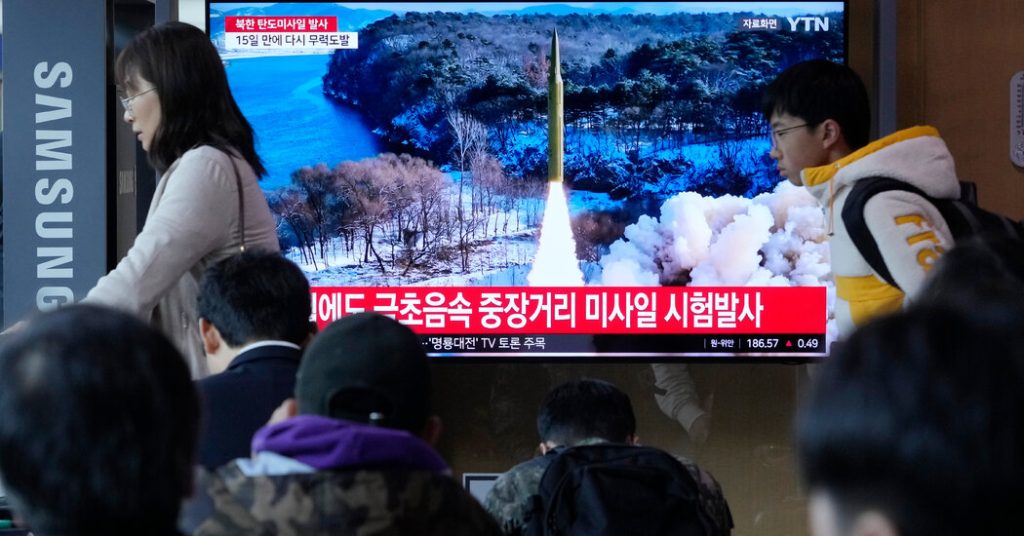North Korea continues to develop missiles capable of targeting American military bases in the Western Pacific. A recent test involved an intermediate-range ballistic missile launched off the coast near Pyongyang, which fell in waters between North Korea and Japan. South Korean and American officials are analyzing the data from the test, which may have involved a new intermediate-range hypersonic missile powered by a solid-fuel engine. North Korea has been combining new solid-fuel and hypersonic technologies to make its missiles faster to launch and more difficult to intercept.
The launch of an intermediate-range ballistic missile from North Korea could potentially cover all of Japan and Guam, a U.S. territory in the Western Pacific. Attacking U.S. military bases in Japan and Guam is a key part of North Korea’s war plan, according to military analysts. North Korea’s leader, Kim Jong-un, has emphasized the importance of these missiles in strategic value, comparing them to intercontinental ballistic missiles that could target the mainland United States. Despite threats and direct diplomacy with President Trump in 2018, North Korea has continued to expand its missile capabilities, especially after the collapse of talks with the U.S. without reaching an agreement on nuclear disarmament or sanctions.
North Korea has conducted a series of tests this year involving underwater drones, cruise missiles, and short-range ballistic missiles, all potentially carrying nuclear warheads. The Pentagon noted in a 2022 report that most of North Korea’s ballistic missiles have the capability to carry nuclear payloads, although using them against the U.S. or its allies would be suicidal for the regime. Despite this, North Korea remains determined to make its nuclear threat credible, with plans to launch several reconnaissance satellites to assist its military in monitoring enemies and targeting them more precisely. North Korea successfully launched its first military reconnaissance satellite in orbit last November, although South Korea’s defense minister expressed doubts about its effectiveness.
There are concerns that North Korea may improve its satellite and other weapon capabilities with assistance from Russia, with allegations of arms shipments and military technology exchanges between the two countries. North Korea has been preparing for another satellite launch from a spaceport in recent weeks, raising further concerns about its technological advancements and potential threats. The ongoing development of North Korea’s missile program, including hypersonic and solid-fuel technologies, poses a significant challenge for regional security and could potentially impact U.S. military forces in the Western Pacific. The continued missile tests also highlight North Korea’s determination to enhance its military capabilities and maintain a credible nuclear threat in the region.


